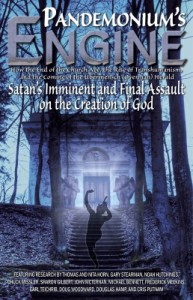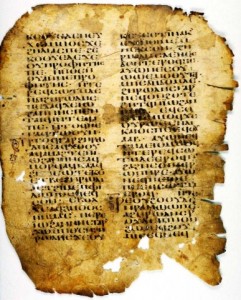 by Cris D. Putnam
by Cris D. Putnam
This post comes from several responses I have made recently on facebook and in emails concerning topics like prophecy, the NWO, transhumanism and various other conspiracy theories. I have always been interested in weird stuff and trade in ideas outside the box of most folks. I have found that there is a considerable body of Christ followers that share my off beat interests and I have made it my ministry to serve them. Because I know that I lean toward “conspiracy thinking” I found this podcast The Umbrella Man and Conspiracy Thinking by Christian philosopher Kenneth Samples very interesting and a little convicting. If you are a conspiriologist, I suggest giving it a listen and examining yourself.
Even so, I think the Bible supports a conspiratorial worldview in the sense that we are engaged in spiritual warfare with powers and principalities (Eph 6:12) and that things are seldom as they seem on the surface e.g. “And no wonder! For Satan himself is disguised as an angel of light” (2 Co 11:14). We are called on to be “shrewd as serpents and as harmless as doves.” (Mt 10:16) Yet we need to be very cautions about potentially making false accusations and doing the devil’s handy work as an “accuser of the brethren” (Rev 12:10). It is important to make a distinction between what is speculation and what is known with certainty. In conspiracy forums, too many times, I see theories become absolutes.
I also bring this up because several well meaning folks have lamented to me that pastors are avoiding a certain topic or asking why they are afraid to preach about “insert favorite conspiracy theory here.” I think we need to be more charitable with our pastors and remind ourselves of their role. Pastors have to deal with families, marriages, divorces, adultery, problems with kids, people with cancer and other diseases, deaths, horrible sins of all sorts, so remember the very painful and difficult realities of daily existence are always in front of them. Those items alone can be overwhelming for a pastor. When you spend your day consoling a parent whose baby just died, driving to a nursing home to comfort a stroke victim and then perhaps conducting a funeral or maybe a wedding, an issue like “Prince Charles could be the antichrist” seems fanciful and unimportant. We must acknowledge that a lot of this sort of information is speculative. Topics like the NWO, the nephilim, or even the prophecy of the popes are on the fringe and frankly there is a lot of nonsense mixed in with the material which is valid. Because it is important for pastors to maintain a level of credibility in dealing with the hard issues of regular life, I cannot fault them for being hesitant to jump on the bandwagon. However, that is where there is room for Christians with those interests to make a contribution. If this is your area of interest, then it is your ministry and you are called to do it with excellence (1 Cor 10:31). That means you should do your best to think critically and parse the information you present for accuracy. There is certainly a role for “out of the box thinking” but always remember, no matter what you do, you are serving the Lord and you are a minister, so take your ministry seriously.
For as the body is one and has many parts, and all the parts of that body, though many, are one body—so also is Christ. For we were all baptized by one Spirit into one body—whether Jews or Greeks, whether slaves or free—and we were all made to drink of one Spirit. So the body is not one part but many. If the foot should say, “Because I’m not a hand, I don’t belong to the body,” in spite of this it still belongs to the body. And if the ear should say, “Because I’m not an eye, I don’t belong to the body,” in spite of this it still belongs to the body. If the whole body were an eye, where would the hearing be? If the whole were an ear, where would be the sense of smell? But now God has placed the parts, each one of them, in the body just as He wanted. And if they were all the same part, where would the body be? Now there are many parts, yet one body. So the eye cannot say to the hand, “I don’t need you!” nor again the head to the feet, “I don’t need you!” On the contrary, all the more, those parts of the body that seem to be weaker are necessary. And those parts of the body that we think to be less honorable, we clothe these with greater honor, and our unpresentable parts have a better presentation. But our presentable parts have no need ⌊of clothing⌋. Instead, God has put the body together, giving greater honor to the less honorable, so that there would be no division in the body, but that the members would have the same concern for each other. So if one member suffers, all the members suffer with it; if one member is honored, all the members rejoice with it.(1 Co 12:12-26)







